Notes on PICTIC II performance
August 12, 2010: Initial measurements with default 10 MHz oscillator
Below are a pair of simultaneous measurements, conducted to evaluate agreement between a PICTIC II and an HP 5370B counter at two different interpolator gain settings.
The START inputs of both counters were driven by an HP 5065A Rb standard divided down to 1 Hz (for the 5370B) and 10 Hz (for the PICTIC II) with
a TADD-2 divider. The STOP inputs were driven by the 10 MHz output from a stock Trimble Thunderbolt GPS clock via a Mini-Circuits splitter.
The 10 MHz
signal at the PICTIC II was squared for CMOS compatibility with a differential pair of 2N3906s, modified
slightly to optimize its output range for 0-5V.
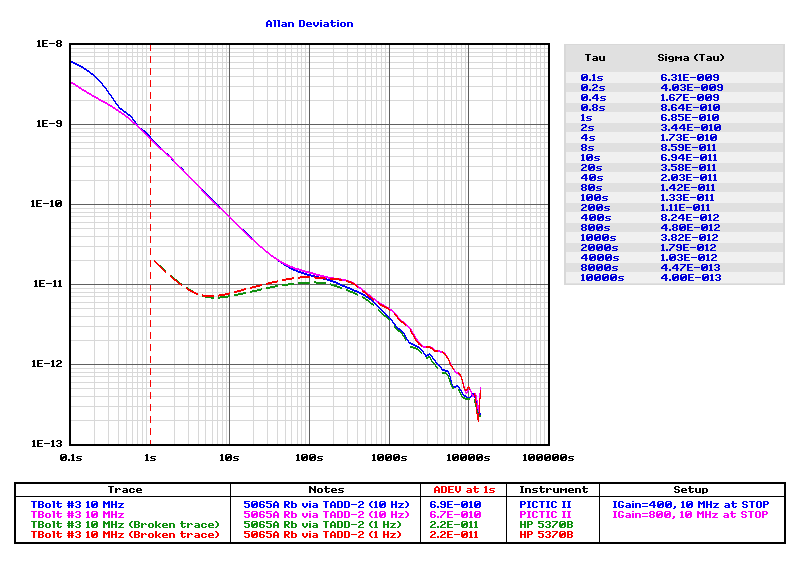
Above, the blue and green traces
were taken over several hours with the PICTIC II configured for IGain=400 (@@Cg190). This results in a
theoretical resolution of 250 ps. The magenta and red pair
were taken in a separate run with the PICTIC II configured for IGain=800 (@@Cg320), resulting in a
theoretical resolution of 125 ps.
At least with the stock 10 MHz clock, there appears to be little difference between these settings. Going by the ADEV figure at t=1s, the PICTIC's observed resolution is about
680 ps, maybe a bit lower at IGain=800, while the HP 5370B's observed resolution is close to its specified limit at about 22 ps.
Considering that most counters are lucky to deliver resolution in the
microsecond range, this represents excellent performance on the part of the $50 PICTIC II. It will be interesting to see how well the board can perform when its onboard clock is upgraded to a faster, more stable source.
___________
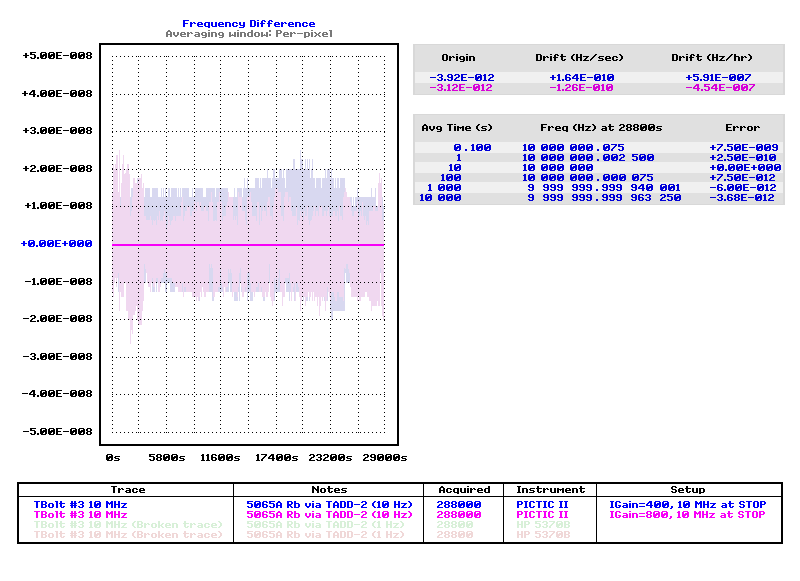
The PICTIC's phase record is shown above as a frequency-difference plot. With averaging, the PICTIC makes a great general-purpose frequency counter.
___________
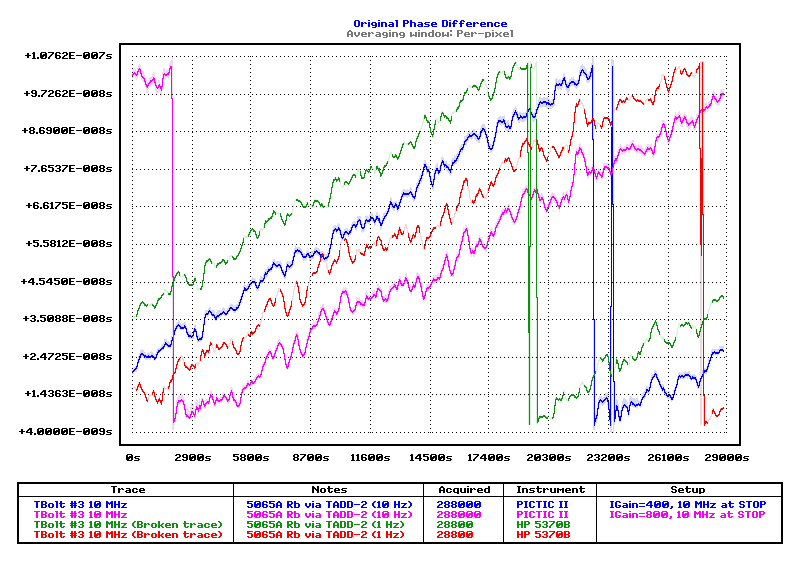
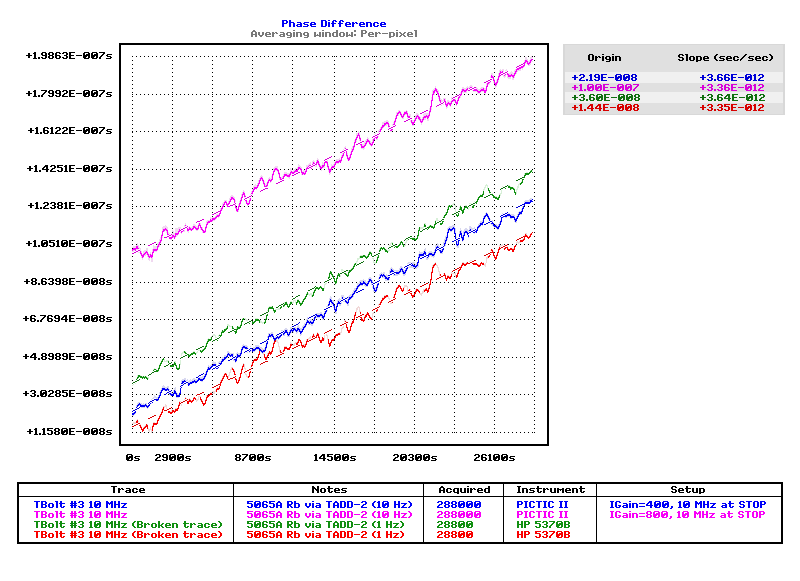
The phase records from both instruments are shown here, before and after unwrapping.
___________
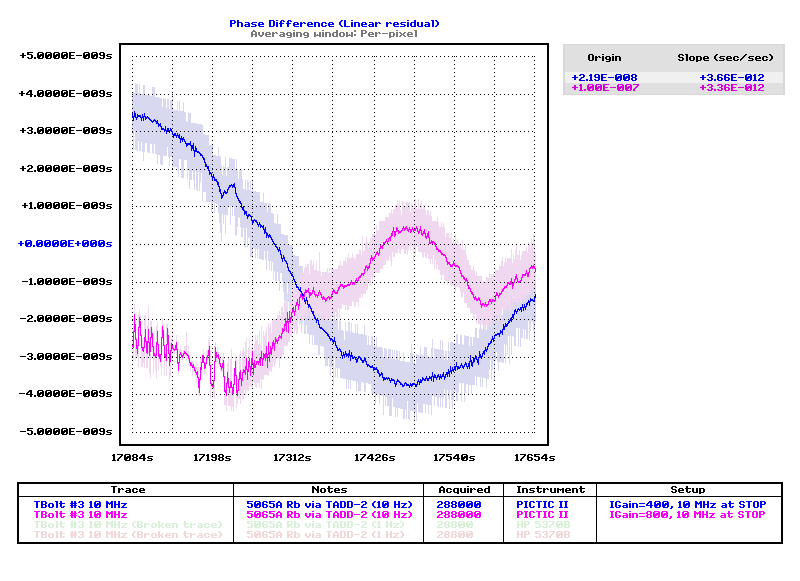
A zoomed-in view of the PICTIC II phase records, covering about 10 minutes in the middle of their respective runs. Quantization at the 250-ps and 125-ps timescales is clearly visible, as expected.
Back to John Miles, KE5FX home page
Text copyright © 2010 John Miles. All rights reserved.




